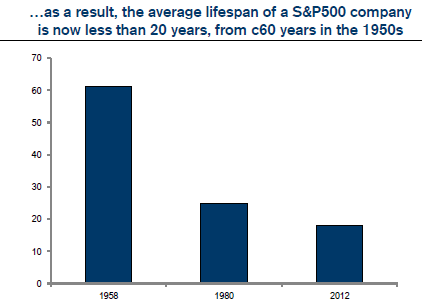The world has changed
The fourth industrial revolution that started this millennium is predominantly based on new information age technologies, that enables new ways of working and living, and which drives the need in organisations for Digital Transformation.
Here “information” is a key term as virtually all products and services can be enhanced, or improved by the better use of information, information technology and indeed many new products and services are at their core about information!
Examples of industry leaders being displaced by new technologies and start-ups are all around us; we will not repeat these dire stories told about Blockbuster, Kodak, Nokia, Border Books, etc. Neither will we tell you here about the firms and technologies that replaced them – for that, there are mountains of reading material available on the internet, you just need to search and will discover many examples.
Like previous industrial revolutions, the use of digital technologies is pervasive and disruptive and results in the displacement of well-established industries and incumbents, and for these firms it has dire consequences.
Unlike previous industrial revolutions, however, the fourth industrial revolution brings to bear a completely new dynamic which was not present in previous generations of industrialisation, they are:
- The ability for small innovators to take on large incumbents – because access to capital is now no longer (or less of) a barrier to entry.
- The pervasiveness of new sources of competition, most probably driven by the highest level of education ever (virtually all works are now knowledge work), and the ease of access, and pervasiveness of technological aids to innovate, manufacture and offer services in competition with services and products of incumbents
- The availability of data, information, and knowledge and the possibilities understanding these brings to bear.
Just the other day I was talking with a customer about a new re-organisation/rationalisation their company is busy with. What came out of the conversation was that up to about 1990, organisations were forced to re-organise about every 30 years, in the last three decades this has shrunk to 12, 8 and now to 3-5 years.
The disruptive force of technology is killing off older companies earlier and at a much faster rate than decades ago, squeezing employees, investors and other stakeholders, according to a new report.
Technology killing off corporate America: Aug 2017 – Michael Sheetz
Source: Credit Suisse
I don’t know where she got her data from, but to me its sounds about right! If your organisation do not re-invent itself every three or so years – you no longer have a reason for existing!
We said that we would not attempt to scare you into believing that digital transformation is a strategic imperative for ALL organisations – and we wouldn’t.
This is not scaring tactics, we will merely state facts;
Organisations have two choices, transform (adapt) or die. Choose how your organisation will respond, either move on and transform, or unwind your business.
These are your ONLY two choices.
You may say that the second option is harsh, and yes it is, but in the long run it will be better for your shareholders to get cash out now that nothing later!
We believe that continual renewal is much easier than having to re-organise and rightsize at intervals, with all the pain and change that go with this.
Using ADapT, the aim is to never have to do this again!

